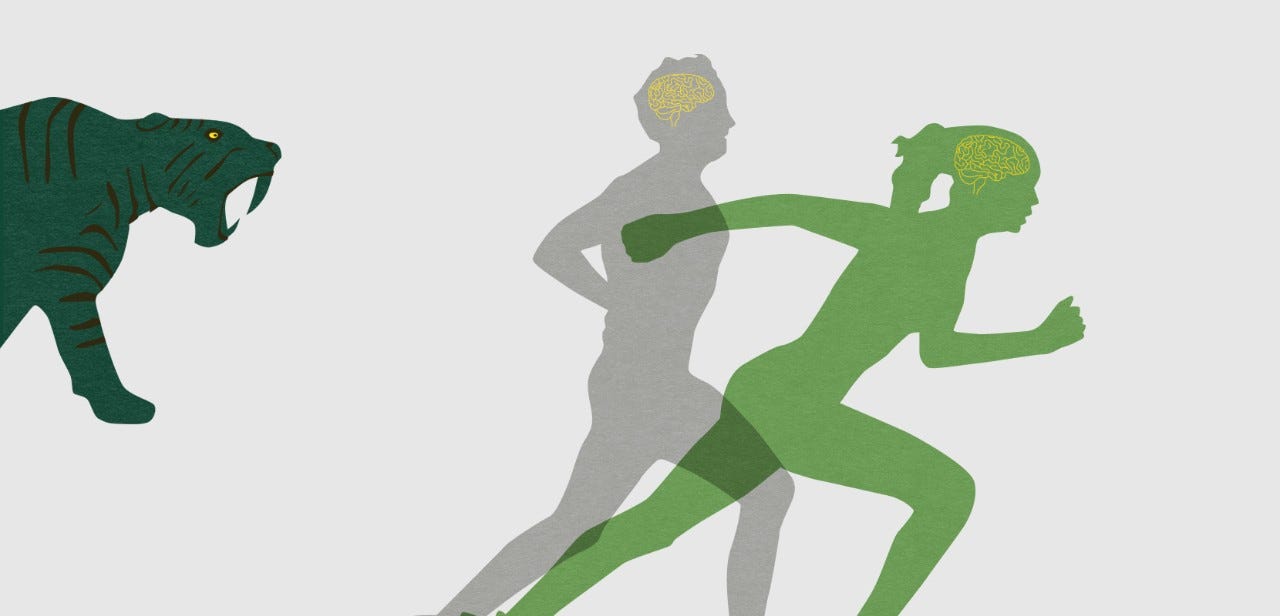Relaxation techniques for stress
According to popular wisdom: As the saying goes: “If you’ve got a little time, relax for 15 minutes; if you’ve got no time, relax for an hour.” 3 methods that help you relax.

Progressive muscle relaxation
You can learn this technique relatively quickly. It’s particularly suitable for anyone new to relaxation exercises. This technique was developed by American Edmund Jacobson (1888–1983). It is based on exercises in which different muscles (shoulders, legs, hands, etc.) are trained. consciously tense and then relax again. By being aware of the various physical sensations of tensing and relaxing the muscles, you experience a general feeling of relaxation.
Want to try it out?
1. First take a few deep, relaxed breaths.
2. Now try to tense all the muscles of your body one after the other for about five seconds: first your feet, then your calves, thighs, buttocks, pelvic floor muscles, stomach, shoulders, face and arms. Finally, clench your fists. Just enough to feel a slight pull, but not so much that you cramp up. Try to breathe normally throughout the exercises.
3. Now let go and release all the tension – without moving too much.
4. Focus for a few moments on the feeling of relaxation and enjoy it.
This exercise is great for relaxing when you have a few moments – during a break at work, at home or even on the train. Or you could try doing it regularly before going to bed.
Autogenic training
“My body is heavy” and similar phrases are the key to autogenic training, probably the best known method of relaxation. You give yourself instructions. The technique was first introduced by psychologist Heinrich Schultz (1884–1979). Autogenous means "self-generating". Autogenic means “self-generating”, so these exercises teach you how to calm yourself and relax.
You can learn the technique in courses or on your own to use later as a form of self-help in order to prevent stress or at times of acute tension. Regular training is the key.
Ready for a trial lesson?
1. You need a quiet space and approximately 30 minutes. Lie on your back. You can place cushions or a blanket under your head, arms, legs and back if needed. Close your eyes. In your mind, give yourself the following verbal cues one after the other:
2. “My left arm is heavy.” (Then your right arm, left leg, right leg. etc. until you’ve covered all body parts).
3. “I am completely calm. I am lying down and breathing. Nothing can disturb me.”
4. “My left arm is warm.” (Go through all body parts again).
5. "I breathe calmly. My heart beats regularly.”
6. Listen to your body and feel how the exercise is working. Stand up, stretch and see how your body feels now.
Autogenic training can also help you generally have more confidence in your abilities and even help you put behavioural changes into practice. Advanced students formulate individual, repetitive sentences depending on their objective. These personal magic formulas can help you to focus on your very own objectives:
- “My head is clear. I'm concentrating.”
- “I prepared myself well. I’ll get there!”
- “I’m allowed to make mistakes. I am happy with myself.”
Imagination
The third method is nothing more complicated than a journey in your mind. Imagine yourself to be in a pleasant situation, “travel” in your mind to a beautiful, stimulating place to trigger positive feelings. This is an effective trick to free yourself of negative emotions and to relax.
Here’s how to take a journey in your mind:
You need around half an hour. Close your eyes. You can lie down or sit in a comfortable position. You’re ready to go. Imagine a situation and introduce as much detail as possible. This could be a cosy get-together with your loved ones, a boat ride on a mountain lake, a walk along the beach looking for shells, diving in tropical waters, visiting an oriental spa. – You choose the scene. It can be anything that makes you happy.
Let your imagination run wild when picturing your sensual, exciting or soothing journey. Incorporate as many sensory levels as possible: Think about smells, sounds, colours, textures, etc. that make you feel good.
Imagination also works well with the corresponding sound. The classics: birdsong, the sound of the sea, whale songs or sacred music from East and West. If you don’t like the idea of actively imagining a scene yourself, you can also try ready-made journeys of the mind that are available as audio CDs or podcasts.
Here’s how to take a journey in your mind:
1. You need around half an hour. Close your eyes. You can lie down or sit in a comfortable position.
2. Imagine a situation and introduce as much detail as possible. This could be a cosy get-together with your loved ones, a boat ride on a mountain lake, a walk along the beach looking for shells, diving in tropical waters, visiting an oriental spa. – You choose the scene. It can be anything that makes you happy.
3. Let your imagination run wild when picturing your sensual, exciting or soothing journey. Incorporate as many sensory levels as possible: Think about smells, sounds, colours, textures, etc. that make you feel good.
Tip: Imagination also works well with the corresponding sound. The classics: birdsong, the sound of the sea, whale songs or sacred music from East and West. If you don’t like the idea of actively imagining a scene yourself, you can also try ready-made journeys of the mind that are available as audio CDs or podcasts.


